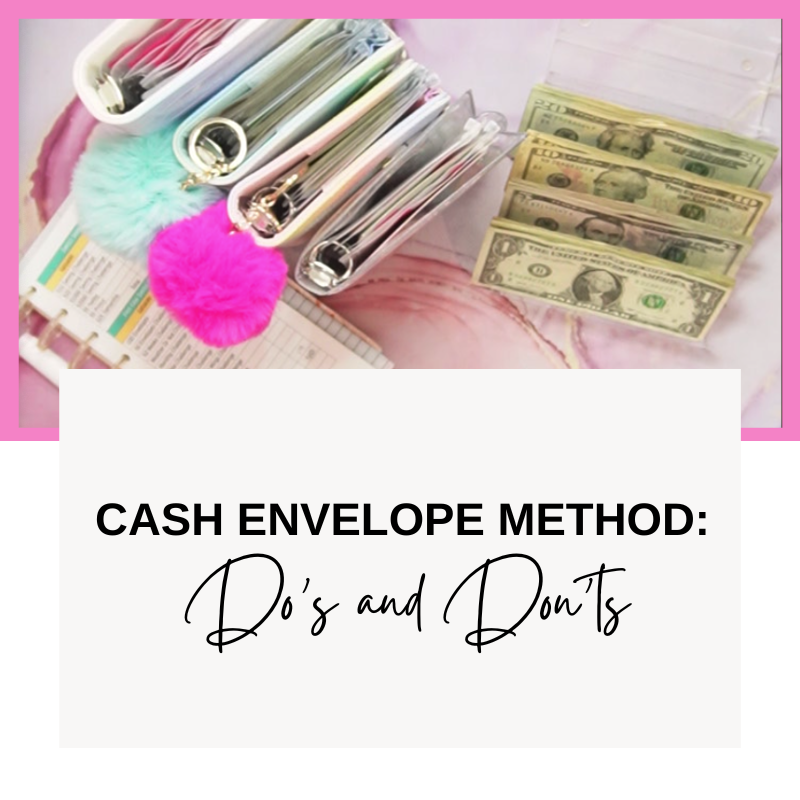
Cash Envelope Method: Do’s and Don’ts
Share
The cash envelope method is a budgeting technique that involves paying for expenses with cash rather than debit or credit cards. Because of its simplicity and efficiency, this strategy has been used for decades and remains popular today. But, in order to make the most of this budgeting strategy, several do's and don'ts must be followed. In this post, Pink Cash Budgeting presents you with the dos and don'ts of the cash envelope approach to assist you get started with this budgeting plan.
Do’s
- Make a budget: Before you begin using the cash envelope approach, you must first develop a budget. This will assist you in determining how much money you will require for each spending category, such as groceries, entertainment, and transportation. Once you've established a budget, you can put money into each envelope based on the amount you've set aside.
- Prioritizing your spending: Prioritizing your expenses and allocating funds correctly is crucial. For example, you may want to set aside extra money for expenses like food, rent or mortgage payments, and utility bills. You may also wish to save some money for unforeseen costs or emergencies.
- To keep track of your spending: Maintaining a record of your outgoing costs can help you avoid going overboard. In order to achieve this, you may either use a budgeting tool or write down every cost you have. You may see areas where your spending needs to be changed and make the necessary adjustments by keeping track of your costs.
- Cash for discretionary spending: Discretionary spending, such as entertainment or dining out, lends itself perfectly to the cash envelope technique. You can control your expenditures and prevent overpaying on non-essential products by using cash.
- Keep your envelopes secure: It is critical to keep your cash envelopes secure in order to avoid losing or having them stolen. You can keep your envelopes in a secure box or a safe.
Don’ts
- Overspending: Overspending is one of the most common problems of the cash envelope approach. If you overspend in one category, you might not have enough money to cover other costs. It is critical to stick to your budget and avoid making impulse purchases.
- Avoid credit cards: Utilizing credit cards negates the aim of the cash envelope method. When you use credit cards for expenses, you risk accruing debt and incurring interest. To keep under your budget, stick to using cash for all of your expenses.
- Budget for unexpected expenses: Unexpected expenses, such as car repairs or medical bills, might be difficult to budget for. It is critical to set aside money or keep a separate envelope for these expenses each month.
- Carry only what you need: Bringing all of your cash with you is risky since you could lose it or have it stolen. Instead, only bring the money you need for that day or expense.
- Don't be too rigorous: Having a budget is necessary, but so is being flexible. If you overspend in one category, you can compensate by increasing your expenditure in another. Allow for some flexibility in your budget and don't be too rigorous with it.
- For only certain expenses: The cash envelope method may not be appropriate for all expenses, such as bills or purchases. It may be more convenient to use a debit or credit card for these expenses. Employ the cash envelope method for more appropriate expenses, such as discretionary spending or everyday expenses.